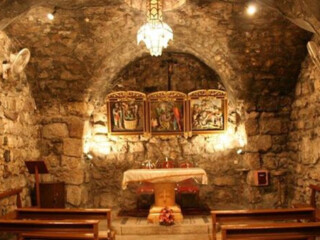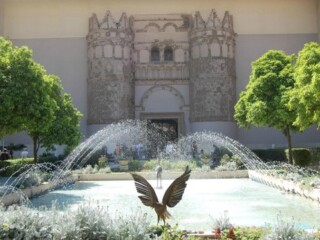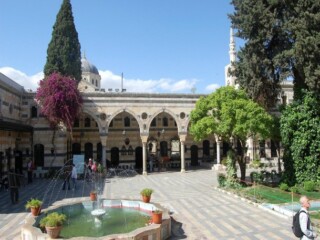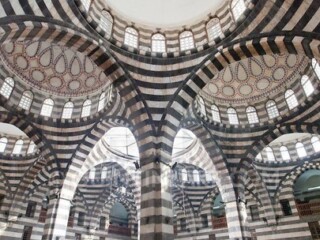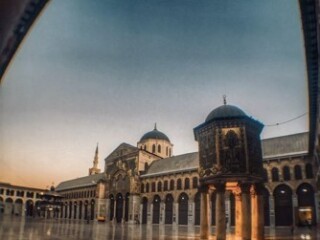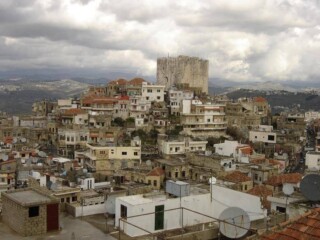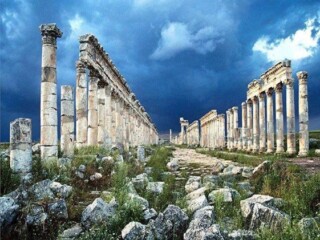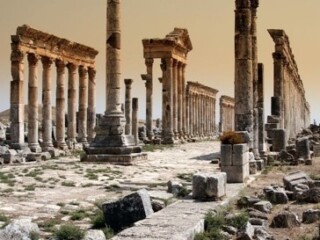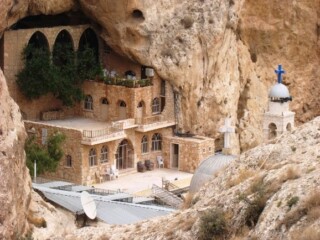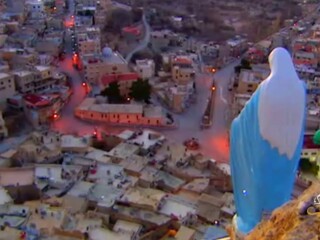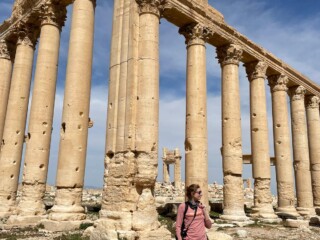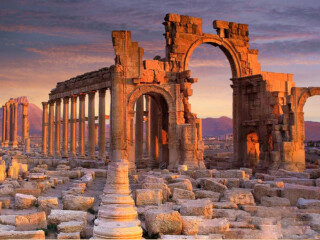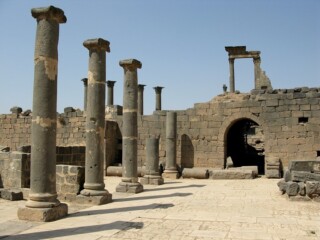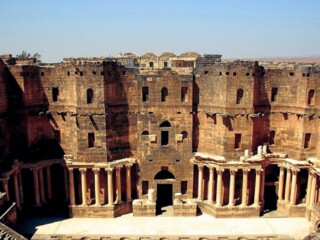Explore Your Trip Day By Day
Day 1
Arrival in Damascus
Meet our representative at the specified place and time in Beirut &transfer to Damascus, Meet the guide at the Syrian –Lebanese Border (Jdaida Border), Continue to Damascus
Picking up rooms at the hotel
Full day in Damascus
-
- The National Museum: Its visit provides an overview of the civilizations that have succeeded in Syrian soil. It contains statues, seals, jewelry, masks, mosaics, tablets and weavings from the most important sites in the country.
- Souk Al-Hamidiye : The most beautiful souk of Damascus. Its shops display all sorts of goods, especially clothes, fabrics, pastries and handicrafts.
- The Umayyad Mosque : Located in the heart of the Medina, the mosque is distinguishedby its prayer room, its courtyard and its walls covered with mosaics.
- The National Museum: Its visit provides an overview of the civilizations that have succeeded in Syrian soil. It contains statues, seals, jewelry, masks, mosaics, tablets and weavings from the most important sites in the country.
- Souk Al-Hamidiye : The most beautiful souk of Damascus. Its shops display all sorts of goods, especially clothes, fabrics, pastries and handicrafts.
- El-Azem Palace: Not far from the Great Mosque, in the labyrinth of the souk is the palace El-Azem. It is considered as the sumptuous model of the Damascene house whose exterior simplicity and sobriety do not suggest anything about a beautiful and rich interior, with many varieties of flowers, fruit trees and water jets.
- Caravanserai: is the largest caravanserai (khān) in the Old City of Damascus. Situated along Al-Buzuriyah Souq, it was built in 1751. Khan As’ad Pasha has been described as one of the finest khans of Damascus, and the most “ambitious” work of architecture in the city.
- Straight Street (or in Latin, Via Recta): is the Roman street that runs from east to west in the old city of Damascus. It was visited by St. Paul as recorded in the book of Acts of Apostles and contains several interesting sights from the Roman, Christian and Islamic periods. Under the Greeks, the old city of Damascus was designed after the grid pattern designed by Hippodamus. Under Roman rule, the Via Recta was widened and became a colonnaded thoroughfare (documanus). These columns can still be seen today.
- Saint Ananian Church: It is of particular importance because it is attached to the memory of Saint Paul. Before his conversion to Christianity he had a vision here that blinded him for several days and gave him an unshakeable faith.
- In the afternoon: you will explore Damascus old town, free time.
Day 2
Damascus, Maaloula, Afamia, Afamia-Krak des Chevaliers and AlMeshtaya
-
- Breakfast at the hotel.
- Departure towards Maaloula, a Christian village famous for its houses dug in the rock and especially it still speaks Aramaic, the Arabic dialect of Christ.
- Pass by Afamia: The city of Apamea was distinguished by its main street, which stands on both sides . In apart of the main street we have magnificent spiraled columns, in addition the theater, the valleys, the cathedral, churches, the palace, mosaic panels and many monuments scattered throughout the place
- Continuation to the Krack des Chevaliers, the most famous fortress of the Middle Ages.
The crusaders made it the basic element of their system of strongholds on the coast. It is so vast and so impregnable that it has become the symbol of a whole era of bloody struggles between Muslims and Crusaders … - Overnight at the hotel in AlMeshtaya
Day 3
AlMeshtaya, Palmyra, Damascus
-
-
- Breakfast at the hotel.
- Departure to Palmyra: The one that the Romans baptized Palmyra (the city of palms) and that the Syrians call Tadmor (miracle in Aramaic) is the most important oasis of the Syrian Desert. Located 240 km from Damascus, Palmyra is the city of all superlatives. It arises in the midst of golden sands that extend to infinity. An oasis of columns remains and palm trees that testifies to the splendor of this city that made Rome tremble at some point.
- The Temple of Bel/Ba’al: Bel/Ba’al was for the Palmyrans what Zeus was for the Greeks. It’s temple is the largest and most majestic building in Palmyra, a unique example of fusion between Greco-Roman and oriental-inspired architecture.
- Tombs: including towers tombs, tombs underground, Temple tombs and individual tombs.
-
-
-
- Back to Damascus & Overnight at the hotel
-
Day 4
Damascus, Bosra and back to Damascus
-
-
- Breakfast at the hotel.
- Departure to Bosra
a very ancient city, already mentioned in the inscriptions of Akhenaton, in the 14th century BC. The most important of its monuments is the famous theater (2nd century AD), the one of the most beautiful and best preserved in the world. It is 45 meters long and has a depth of 8 meters. It can accommodate seventeen thousands spectators.
-
-
-
- Back to Damascus – Departure to Beirut
-







